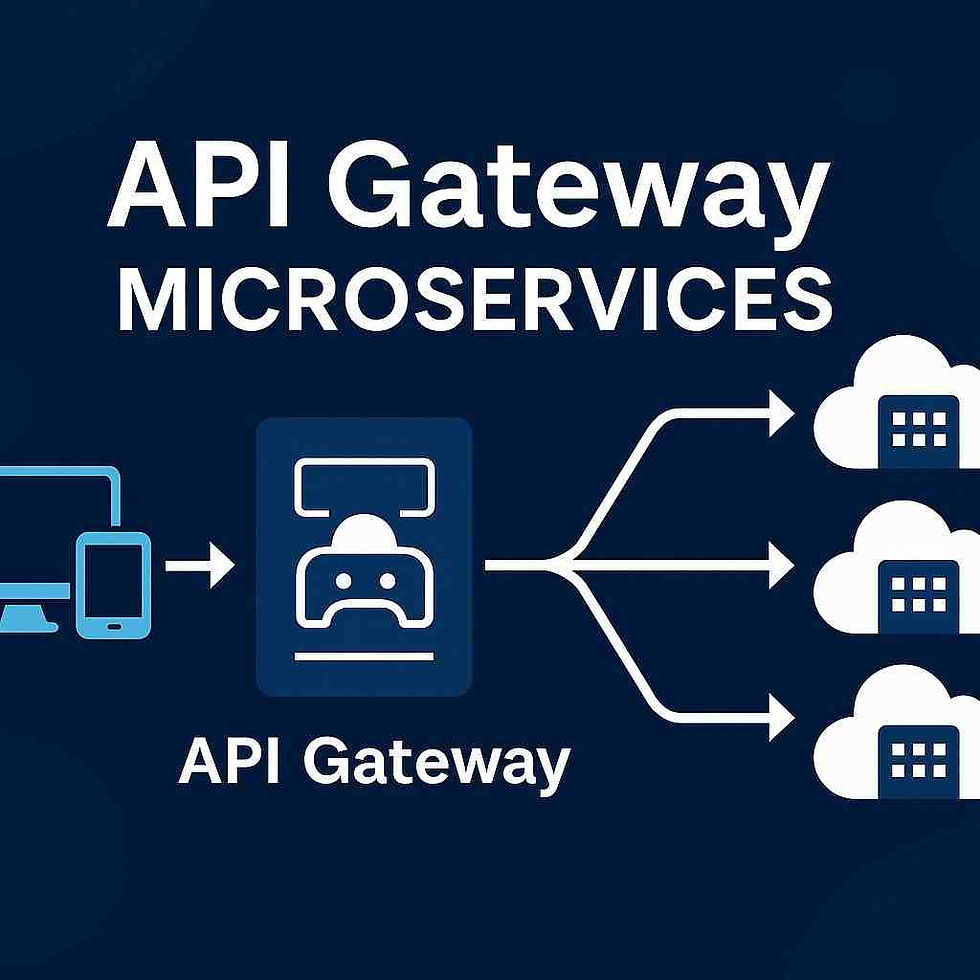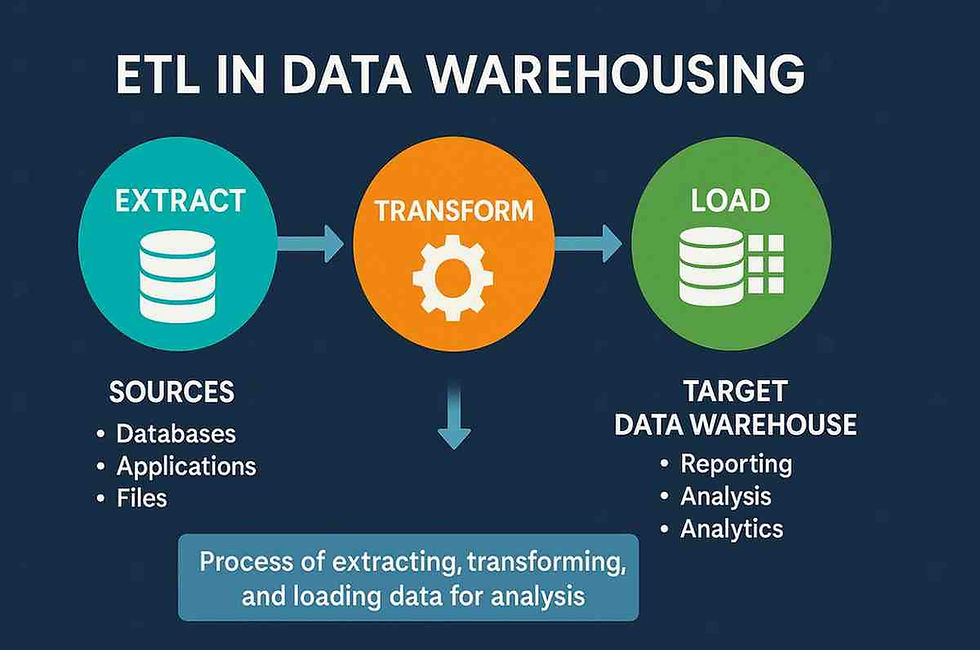API Example: Your Guide to Real-World API Applications 2025
- Gunashree RS
- Jul 15
- 7 min read
What Are API Examples and Why Do They Matter?
Application Programming Interfaces (APIs) have become the invisible backbone of our digital world. Every time you check the weather on your phone, share a photo on social media, or make an online payment, you're interacting with APIs. Understanding API examples helps developers and businesses leverage these powerful tools to create seamless digital experiences.
According to Cloudflare's 2025 API Security and Management Report, 62% of internet traffic is now API requests, highlighting the critical role APIs play in modern technology infrastructure. This dramatic increase from previous years demonstrates how APIs have evolved from simple data exchange tools to fundamental components of digital transformation.

Understanding Different Types of API Examples
REST API Examples: The Modern Standard
REST (Representational State Transfer) APIs represent the most widely adopted API architecture today. They use standard HTTP methods like GET, POST, PUT, and DELETE to interact with resources. Here are some prominent REST API examples:
Twitter REST API Implementation:
GET /users/show: Retrieves user profile information
POST /statuses/update: Creates a new tweet
DELETE /statuses/destroy: Removes a tweet
E-commerce REST API Structure:
GET /products: Lists all products
GET /products/{id}: Retrieves specific product details
POST /cart/items: Adds items to the shopping cart
PUT /orders/{id}: Updates order status
SOAP API Examples: Enterprise-Grade Solutions
SOAP (Simple Object Access Protocol) APIs follow a more rigid, XML-based structure that provides robust security and transaction support. Common SOAP API examples include:
Banking SOAP API:
<soap:Envelope>
<soap:Header>
<auth:Authentication>
<auth:Username>user123</auth:Username>
<auth:Password>pass456</auth:Password>
</auth:Authentication>
</soap:Header>
<soap:Body>
<bank:GetBalance>
<bank:AccountNumber>1234567890</bank:AccountNumber>
</bank:GetBalance>
</soap:Body>
</soap:Envelope>Government Services SOAP API:
Tax filing systems
Healthcare record management
Social Security Administration
GraphQL API Examples: Query Language Revolution
GraphQL APIs allow clients to request exactly the data they need, reducing over-fetching and under-fetching issues. Notable GraphQL API examples include:
Social Media GraphQL Query:
query GetUserProfile {
user(id: "123") {
name
email
posts(first: 10) {
title
content
likes
}
}
}E-commerce GraphQL Implementation:
Single endpoint for product catalogs
Real-time inventory updates
Personalized recommendations
Real-World API Examples by Industry
Social Media API Examples
1. Facebook Graph API: The Facebook Graph API enables developers to access Facebook's social graph data. Key functionalities include:
User profile management
Post creation and sharing
Friend connections
Page administration
2. Instagram Basic Display API: Instagram's API allows applications to:
Display user media content
Access basic profile information
Retrieve media metadata
Payment Processing API Examples
1. Stripe API: Stripe's REST API simplifies online payments:
POST /charges: Process payments
GET /customers: Retrieve customer information
POST /subscriptions: Manage recurring billing
2. PayPal API: PayPal offers comprehensive payment solutions:
Express checkout integration
Merchant services
Dispute resolution
Mapping and Location API Examples
1. Google Maps API: Google Maps provides location-based services:
Geocoding API: Convert addresses to coordinates
Places API: Search for local businesses
Directions API: Calculate routes
2. Mapbox API: Mapbox offers customizable mapping solutions:
Custom map styling
Real-time location tracking
Geospatial analysis
Cloud Services API Examples
1. Amazon Web Services (AWS) API: AWS provides extensive cloud infrastructure APIs:
EC2 API: Manage virtual servers
S3 API: Store and retrieve files
RDS API: Database management
2. Microsoft Azure API: Azure offers enterprise cloud solutions:
Virtual machine management
Storage account operations
Authentication services
API Example Statistics and Market Insights
According to the 2025 State of the API Report, 67% of respondents report working with APIs that generate income, demonstrating the continued shift toward APIs as revenue-generating products rather than just technical enablers.
Key API Market Statistics:
Growth Rate: Postman users grew to over 40 million in 2025, up from 35 million in 2024
Global Reach: Postman collections are being created in 268 countries worldwide
Development Challenges: 38% of companies report that they spend more time troubleshooting APIs than developing new features
Revenue Impact: API-first companies report 2.3x faster time-to-market for new products
Industry Adoption Patterns
Industry | Primary API Type | Common Use Cases |
Fintech | REST, SOAP | Payment processing, account management |
Healthcare | SOAP, REST | Patient records, appointment scheduling |
E-commerce | REST, GraphQL | Product catalogs, order management |
Social Media | REST, GraphQL | Content sharing, user interactions |
IoT | REST, MQTT | Device communication, data collection |
Advanced API Example Implementations
Microservices Architecture Examples
1. Netflix API Ecosystem: Netflix uses hundreds of microservices connected through APIs:
User authentication service
Content recommendation engine
Video streaming optimization
Billing and subscription management
2. Uber API Architecture: Uber's platform relies on interconnected APIs:
Driver location tracking
Trip matching algorithms
Payment processing
Real-time navigation
API Gateway Examples
1. Kong API Gateway: Kong provides centralized API management:
Rate limiting and throttling
Authentication and authorization
Request/response transformation
Analytics and monitoring
2. AWS API Gateway: Amazon's managed API service offers:
Serverless API hosting
WebSocket support
Caching mechanisms
Integration with Lambda functions
Best Practices for API Example Implementation
Security Considerations
1. Authentication Methods
OAuth 2.0: Industry standard for authorization
API Keys: A Simple authentication mechanism
JWT Tokens: Stateless authentication solution
2. Data Protection
HTTPS encryption for all communications
Input validation and sanitization
Rate limiting to prevent abuse
Regular security audits
Performance Optimization
1. Caching Strategies
HTTP caching headers
Redis for session management
CDN implementation for static resources
2. Response Optimization
Pagination for large datasets
Compression algorithms (gzip)
Field selection to minimize payload size
Error Handling Examples
Standardized Error Responses:
{
"error": {
"code": "VALIDATION_ERROR",
"message": "Invalid email format",
"details": {
"field": "email",
"value": "invalid-email"
}
}
}Testing API Examples
Automated Testing Approaches
1. Unit Testing
Test individual API endpoints
Validate request/response formats
Check error handling scenarios
2. Integration Testing
Test API interactions between services
Validate data flow across systems
Check system behavior under load
Popular Testing Tools
Tool | Type | Primary Use Case |
Postman | Manual/Automated | API exploration and testing |
REST Assured | Automated | Java-based API testing |
Newman | Automated | Command-line Postman runner |
JMeter | Load Testing | Performance testing |
Future Trends in API Examples
Emerging Technologies
1. AI-Powered APIs
Natural language processing services
Computer vision capabilities
Machine learning model deployment
2. Edge Computing APIs
Reduced latency through geographic distribution
Real-time data processing
Protocol Evolution
1. HTTP/3 and QUIC
Improved performance over HTTP/2
Better mobile connectivity
Enhanced security features
2. gRPC Adoption
High-performance binary protocol
Bidirectional streaming
Language-agnostic implementation
Frequently Asked Questions
What is the difference between REST and SOAP API examples?
REST APIs are lightweight and use standard HTTP methods, making them ideal for web applications and mobile apps. SOAP APIs follow a more rigid XML-based protocol, providing robust security and transaction support, making them suitable for enterprise applications.
How do I choose the right API type for my project?
Consider factors like data complexity, security requirements, caching needs, and team expertise. REST works well for simple CRUD operations, GraphQL excels with complex data relationships, and SOAP provides enterprise-grade security.
What are the most common API security vulnerabilities?
Common vulnerabilities include insufficient authentication, lack of rate limiting, improper input validation, and inadequate error handling. Always implement OAuth 2.0 or similar authentication, use HTTPS, and validate all inputs.
How do I handle API versioning in real-world applications?
Use URL versioning (e.g., /v1/users), header versioning, or query parameter versioning. Maintain backward compatibility and provide clear deprecation timelines for older versions.
What's the difference between public and private APIs?
Public APIs are accessible to external developers and often require registration and API keys. Private APIs are internal to an organization and used for system integration and microservices communication.
How do I optimize API performance?
Implement caching strategies, use pagination for large datasets, compress responses, implement CDNs, and monitor API performance metrics. Consider using GraphQL for efficient data fetching.
What are webhooks, and how do they differ from APIs?
Webhooks are event-driven HTTP callbacks that automatically send data when specific events occur. Unlike APIs that require client requests, webhooks push data to predefined endpoints in real-time.
How do I test APIs effectively?
Use automated testing tools like Postman, REST Assured, or custom scripts. Test for functionality, performance, security, and error handling. Implement continuous integration for API testing.
What is rate limiting, and why is it important?
Rate limiting controls the number of API requests a client can make within a specific timeframe. It prevents abuse, ensures fair usage, and maintains system stability.
How do I document APIs properly?
Use tools like Swagger/OpenAPI, Postman documentation, or API Blueprint. Include endpoint descriptions, request/response examples, authentication requirements, and error codes.
Conclusion
API examples demonstrate the fundamental role these interfaces play in modern software development. From simple REST endpoints to complex GraphQL schemas, APIs enable seamless integration between diverse systems and services.
Understanding different API types, implementation patterns, and best practices is crucial for developers building scalable, secure applications.
The API landscape continues evolving with new technologies like AI integration, edge computing, and advanced security protocols. By studying real-world API examples and staying informed about industry trends, developers can make informed decisions about API architecture and implementation strategies.
Whether you're building a simple web application or a complex enterprise system, the right API approach can significantly impact your project's success, scalability, and maintainability.
Key Takeaways
• API Growth: 62% of internet traffic consists of API requests, highlighting their critical role in digital infrastructure
• Revenue Generation: 67% of organizations now use APIs as revenue-generating products rather than just technical tools
• Security First: Implement OAuth 2.0, HTTPS encryption, and rate limiting to protect API endpoints
• Performance Optimization: Use caching, pagination, and compression to improve API response times
• Testing Strategy: Implement automated testing for functionality, performance, and security validation
• Documentation: Maintain comprehensive API documentation using tools like Swagger/OpenAPI
• Versioning: Plan for API evolution with proper versioning strategies and backward compatibility
• Monitoring: Track API performance metrics and user behavior to optimize system performance
• Error Handling: Implement standardized error responses and proper HTTP status codes
• Future Readiness: Stay updated with emerging technologies like AI-powered APIs and edge computing
External Sources and References
Postman 2025 State of the API Report - Comprehensive API industry insights and statistics
Cloudflare API Security and Management Report 2025 - API security trends and traffic analysis
Nordic APIs - API Economy Statistics - Industry growth and adoption metrics
AWS API Gateway Documentation - Technical implementation guides
Google Cloud API Best Practices - Performance optimization strategies
OpenAPI Specification - API documentation standards
REST API Design Best Practices - Implementation guidelines and patterns
GraphQL Foundation - Query language documentation and examples
SOAP Protocol Specification - Technical standards and implementation
API Security Best Practices - OWASP - Security guidelines and vulnerability prevention




INDOVIP138
indovip138
indovip138
indovip138
indovip138
indovip138
indovip138
indovip138
indovip138
indovip138
indovip138
indovip138
indovip138
indovip138
indovip138
indovip138
indovip138
indovip138
indovip138
indovip138
indovip138
indovip138
indovip138
indovip138
indovip138
indovip138
indovip138
indovip138
indovip138
indovip138
indovip138
indovip138
indovip138
indovip138
indovip138
indovip138
indovip138
indovip138
indovip138
indovip138
indovip138
indovip138
indovip138
indovip138
indovip138
Link INDOVIP138
indovip138
indovip138
indovip138
indovip138
indovip138
indovip138
indovip138
indovip138
indovip138
indovip138
indovip138
indovip138
indovip138
indovip138
indovip138
indovip138
indovip138
indovip138
indovip138
indovip138
indovip138
indovip138
indovip138
indovip138
indovip138
indovip138
indovip138
indovip138
indovip138
indovip138
indovip138
indovip138
I used to think that needing help meant I was failing, but hiring someone to help with my online class taught me otherwise. When I decided to hire someone to take my online class, it was out of necessity, not laziness. I had multiple responsibilities that couldn’t be ignored. The help I got was reliable and confidential, and the performance exceeded my expectations. Sometimes getting help is just being smart about your time and priorities.
The audio in Traffic Jam 3D is really lively, which contributes to the overall feeling of excitement. On the other hand, the soundtrack is very lively, which might be distracting when organizing the cars.
Think you’ve got fast reflexes? Prove it in cluster rush, where survival depends on perfect jumps across a sea of moving trucks. Every level pushes you to react faster and smarter. It’s adrenaline in digital form.